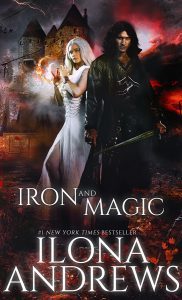Redemption
Here’s a neat little analysis of what a redemption arc is and how it works.
This is a post by RJ Anderson, who wrote Knife and Swift and a good handful of other MG novels. I’ve only read Knife so far, but I really liked it — click through to read my comments about it — and I’ve certainly heard that everything she’s written is excellent.
Also, I agree with her: redemption arcs are one of my favorite things too. Here’s what she says about that:
First, the character destined for a redemption arc must knowingly and deliberately have done something wicked. This may sound like a silly place to start, because you’d think that’s a given, but since I’ve seen people claim that Finn had a “redemption arc” in The Force Awakens, I guess it’s not as obvious as it might seem. But Finn was a brainwashed child soldier who had no idea he was on the wrong side until he was dropped into his very first real battle and given a reprehensible order – which he refused to carry out. Then he promptly defected to the good guys. So Finn never did anything that required him to go through a redemption arc, because he’d never done anything he knew for certain was bad. …
The post then goes on from there, drawing on The Force Awakens, which I haven’t seen, but probably all of you have, so I expect you know all this about Finn. Obviously, given the above synopsis, Anderson is right. You can’t have a redemption arc unless you’ve done something requiring redemption.
Here are the other features of a successful redemption arc:
2. the second ingredient in a true redemption arc is that the character undergoing it must have a sensitive conscience.
3. it’s a classic facet of redemption arcs for the character to double down on their villainy in an effort to deny the increasing weight of guilt that they feel.
4. this can go on for quite some time before the villain’s resistance finally shatters and they face up to being wrong.
And here Anderson adds:
Interestingly enough, this last point is where a lot of so-called redemption arcs fail. There are lots of attractive, charismatic villains in books, TV and movies who do terrible things and maybe even show a few signs of being aware that they’re terrible, but in the end, the story wimps out by romanticizing them and handwaving their crimes as not being their fault – or even not actually being crimes at all.
I can’t speak to any tv shows that have aired in the past 10 years, but this was true back when I watched tv and I expect it’s still true. I imagine the tv show “Dexter” would be a perfect example, but I’m not sure; I’m aware of the premise but didn’t watch it. I would have, but it aired after my no-longer-watching-tv-at-all period started. Oh, how about “Breaking Bad” — my understanding is that one also probably falls into this pattern. Anyway, let’s see where Anderson goes next with her outline of a redemption plot …
5. the agony of repentance – that is, coming to sincerely loathe and regret his past evil behaviour and wanting to turn away from it.
6. transformation — a pivotal moment where we see the villain break down. He stops trying to justify himself, he admits his wrongdoing without making excuses for it, he despises himself and repents … and then he chooses to behave differently from that point on, even if it means losing.
7. our redeemed character demonstrate[s] his sincerity by trying to make amends.
8. And then, ideally, we should see the redeemed character receiving some kind of reward for making the right choice.
Anderson does emphasize that this reward does not necessary mean the redeemed character gets a happy ending, as such, or even survives. Nevertheless, she asserts, and I agre, that ideally there should be a reward of some sort.
You should definitely click through and read the whole thing. This is a great topic and an excellent post. RJ Anderson ends by picking out only two examples of fully successful redemption arcs. (Kylo Ren is not one of them.)
While I wouldn’t want to declare that this are FULLY successful, I guess, I can think of one recent redemption arc that I was pretty suspicious about, but that wound up working rather well: Hugh d’Ambray from the Kate Daniels series:

And in fact, not just the above title, but also the last Kate Daniels novel, showed part of, or I should say shows a reinforcement of, Hugh’s redemption arc. There’s a certain degree of handwaving and saying Oh no, Hugh’s crimes weren’t his fault, but first, the necessary handwaving is handled in a really quite persuasive way, and second, Hugh absolutely does go through the repentance and making amends parts of the arc.
If you’ve got a suggestion for a successful SFF redemption arc, by all means drop it in the comments.
Please Feel Free to Share:











